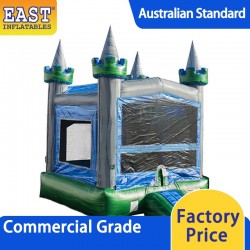
Jumping castles, also known as bouncy castles or inflatable amusement devices, are a common feature at children’s parties and community events across Australia. Despite their popularity, there have been significant concerns about their safety, especially following a number of high-profile accidents. This article explores the current status of jumping castles in Australia and clarifies whether they are banned or simply regulated.
Are Jumping Castles Banned?
Jumping castles are not banned throughout Australia. However, their use is subject to strict regulations and safety standards. These regulations are designed to ensure the safety of users and prevent accidents. The specific rules and requirements can vary depending on the state or territory.
Safety Standards and Regulations
In Australia, jumping castles must comply with the Australian Standards for inflatable amusement devices (AS 3533.4). This standard outlines the design, construction, and maintenance requirements to ensure that jumping castles are safe for public use.
State and Territory Regulations
Each Australian state and territory has its own set of regulations regarding the operation of jumping castles:
- New South Wales (NSW): Operators must follow Work Health and Safety (WHS) regulations, which include regular inspections and maintenance. Local councils may impose additional requirements.
- Victoria: Regulations require adherence to Australian Standards and obtaining permits for public events from local councils. Compliance with local safety regulations is also necessary.
- Queensland: Operators are required to adhere to guidelines from the Office of Fair Trading, ensuring safety and compliance with the relevant standards.
Permits and Inspections
Operating a jumping castle, particularly for public events, often necessitates a permit. This permit ensures that the equipment meets safety standards and that the operator has the appropriate insurance coverage. Regular inspections are also mandated to keep the equipment in safe working order.
Local Bans and Restrictions
Although there is no nationwide ban on jumping castles, some local councils or specific venues might impose temporary bans or restrictions. These are usually in response to safety concerns, such as poor weather conditions or recent accidents. Operators need to stay informed about and comply with any local restrictions that may apply.
Recent Incidents and Safety Measures
Several recent incidents involving jumping castles have highlighted the importance of strict safety measures. These incidents have led to increased scrutiny and calls for enhanced regulations. In response, authorities have advocated for rigorous safety protocols and regular maintenance checks to mitigate risks.
Jumping castles are not banned in Australia, but their use is regulated to ensure safety. Operators must comply with specific standards and regulations, which vary by state and territory. By obtaining the necessary permits, adhering to safety guidelines, and ensuring regular inspections, operators can provide a safe and enjoyable experience for users. Ensuring compliance with these regulations helps prevent accidents and allows jumping castles to remain a popular and fun feature at events throughout the country.




Leave a Comment